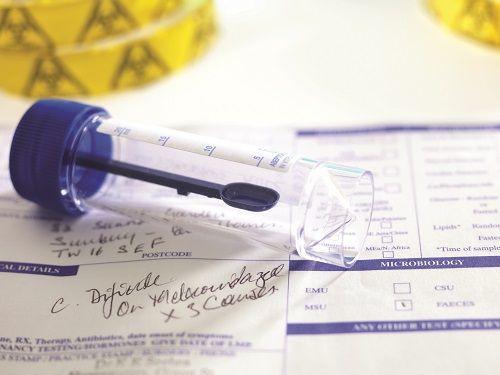CDC Observes C difficile Awareness Month as New Study Shows Efficacy of FMT

The US Centers for Disease Control and Prevention (CDC) wants to reduce instances of Clostridioides difficile infection (CDI) by 30% by 2020. With just a couple of months to go, the agency has declared November to be Clostridioides difficile Awareness Month. The disease affects nearly 500,000 people and kills about 15,000 Americans annually, according to the agency.
As part of its efforts, the CDC is urging healthcare personnel to revisit the agency’s Infection Control Guideline Library and is working to build “prevention collaboratives” with states that have high incidences of CDI. In addition, it works with healthcare facilities to identify and address barriers to preventing infection.
The CDC is tracking the size and scope of the problem in healthcare facilities, how many antibiotics are used, and pinpointing at-risk populations. Its 2016 National and State Healthcare-Associated Infections Progress Report provides a summary of select HAIs, including C. diff, across hospitals, ambulatory surgery centers, inpatient rehab facilities, and skilled nursing facilities. Access to prevention experts and outbreak and laboratory support to facilities as well as local health departments is also being offered.
The CDC is also working to implement antibiotic stewardship programs across all healthcare settings, as research shows that the spike in C. difficile may be linked to antibiotic overuse.
Alternative treatment options may be one way to cut down on the number of antibiotics used but also the number of CDIs in general. A recent study in the Annals of Internal Medicine looks at how antibiotics compare with fecal microbiota transplantation (FMT) in treating C. difficile infection (CDI). Investigators with Universita Cattolica del Sacro Cuore, in Rome, looked at 290 patients with recurrent CDI; 109 of them were treated with FMT and 181 were treated with antibiotics. Sustained cure rates were higher for the FMT patients (97%) then for patients treated with antibiotics (38%). In addition, patients treated with FMT spent a lot less time in the hospital: 13.3 days (mean time) as opposed to 29.7 days for those treated with antibiotics. In FMT, stool from a healthy donor is placed into the intestine of a patient suffering from CDI.
In the study, FMT increased survival rates by 30%, cut the length of hospital stay by about 50%, and reduced the risk of getting sepsis by nearly 4 times in patients who underwent FMT compared with those treated with antibiotics.
"Should our results be confirmed by larger, randomized studies, FMT could be considered an effective treatment option to both cure recurrent CDI and prevent some of its complications, including bloodstream infections," concludes the prospective cohort study that was published November 5.
Both the Infectious Diseases Society of America (IDSA) and the Society for Healthcare Epidemiology of America (SHEA) have recommended FMT with healthy stool for patients with recurrent CDI who fail first-line antibiotics.
But FMT has not been without controversy. In June, the FDA issued a safety alert when 1 patient died and another suffered an invasive infection after FMT treatment. These problems were caused by extended-spectrum beta-lactamase (ESBL)-producing Escherichia coli. The patients received FMTs from the same donor.
Another controversy: Should FMTs be considered a drug or something more along the lines of an organ transplant? As TheNew York Timesreported in March: “The answer will determine how the [US] Food and Drug Administration (FDA) regulates the procedure, how much it costs and who gets to profit.”
Catherine Duff, founder of the patient group Fecal Transplant Foundation, told the newspaper then that “people have good reason to worry because for many patients, fecal transplants are a matter of life and death. The concern is that corporate greed will get in the way of patient access.”
Alexander Khoruts, MD, a gastroenterologist at the University of Minnesota, echoed those sentiments, noting that 3 companies-Rebiotix, Seres Therapeutics, and Vedanta Biosciences-have recently formed an association to lobby the FDA.
“An obscene amount of money is being thrown around by companies trying to profit off of what nature made,” Khoruts said. “I don’t think there are clear villains here, but I worry that the regulators are not caught up on the latest science and that the interests of investors may be exceeding those of patients.”
Uncovering a Hidden Risk: Alcohol Use Disorder Significantly Increases C difficile Infection Rates
April 10th 2025A groundbreaking study reveals a strong connection between alcohol use disorder and increased risk for Clostridioides difficile infection, challenging traditional assumptions and calling for enhanced infection prevention protocols.